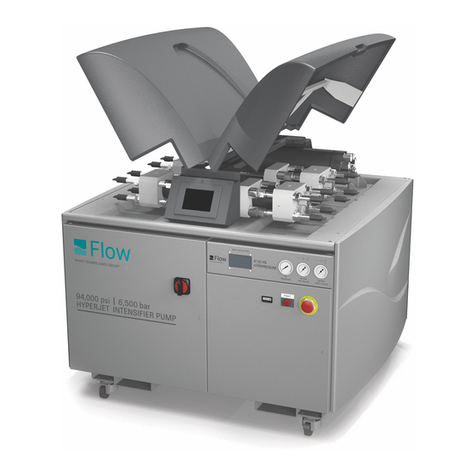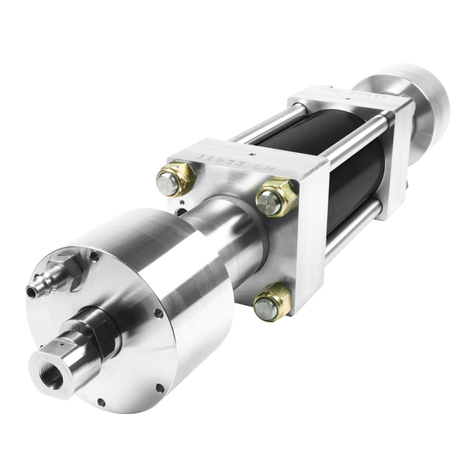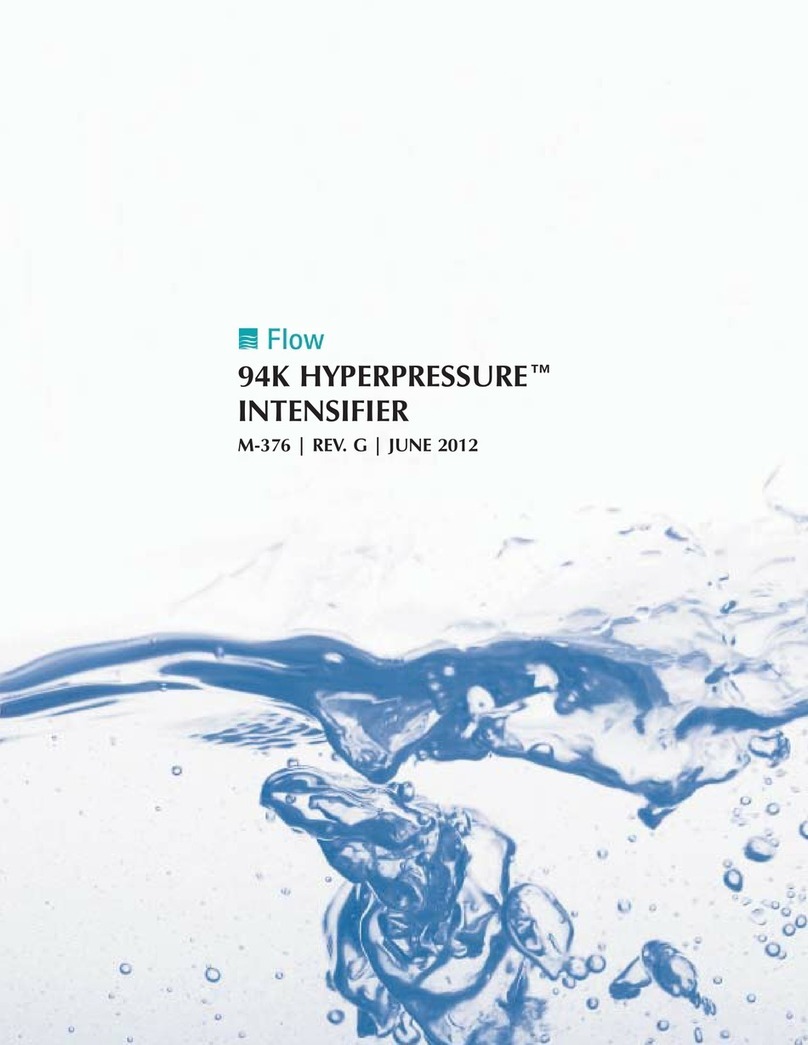
Specifications
Contact FLOW Technical Service for further information.
Also see the system drawings in Chapter 5.
Dimensions
(with covers closed) 60 L x 40 W x 41 in. H
................................1524 L x 1016 W x 1042 mm H
(with covers open) 60 L x 40 W x 52 in. H
................................1524 L x 1016 W x 1321 mm H
Nominal crankcase RPM 50Hz 60Hz
30 hp....................................................716 709
50 hp..................................................1154 1114
Operating pressure...................55,000 psi (3790 bar)
Max. generated pressure ..........60,000 psi (4140 bar)
Filtration provided...............0.5 micron and 1 micron
Min. required inlet water flow rate
30 hp ...............................................2 gpm @ 57 psi
50 hp ...............................................3 gpm @ 65 psi
Low inlet water pressure switch threshold
........................................................................£15 psi
To ensure proper inlet water pressure, a boost pump may
be required.
Req. inlet water temperature range
.........................................55°F–70°F (12.7°C–21°C)
If plant inlet water temperature is outside of this range,
contact Flow Technical Service
Air.........................................90–120 psi (6.2-8.3 bar)
....................................dry and filtered to 10 microns
Drain............212°F (100°C) water at 0.9 gpm (30 hp)
.....................212°F (100°C) water at 1.5 gpm (50 hp)
Max. UHP orifice size
30 hp .......................................................-12 orifice
50 hp .......................................................-16 orifice
Voltage
Nominal
system
voltage **
Horsepower
(hp)
Frequency
(Hz)
Phase
200 * 50 *
200 * 60 *
208 * 60 *
230 * 50 *
240 30/50 60 3
380 * 60 *
400 30/50 50 3
480 30/50 60 3
500 * 60 *
* Not supported.
** Utilization voltage is often referenced, which will be
3-5% lower than the nominal system voltage. Where
referenced, the utilization voltage is equivalent to the
nameplate voltage of a product.
Crankcase oil
Use of Shell Morlina 100 Hydraulic Oil (ISO 100) is
recommended, but other manufacturer's equivalents
can be used.
When operating the pump in an environment with an
ambient temperature greater than 86°F (30°C), a
heavier oil is recommended to be used. Contact Flow
Technical Services for additional information.
Reservoir
capacity
2.0 qt (1.9 liter)
Maintain oil level between the high and low
level marks on the dipstick.
6 | M-416 ©FlowInternationalCorporation
HYPLEX PRIME PUMP
Maintenance & Service Manual






























